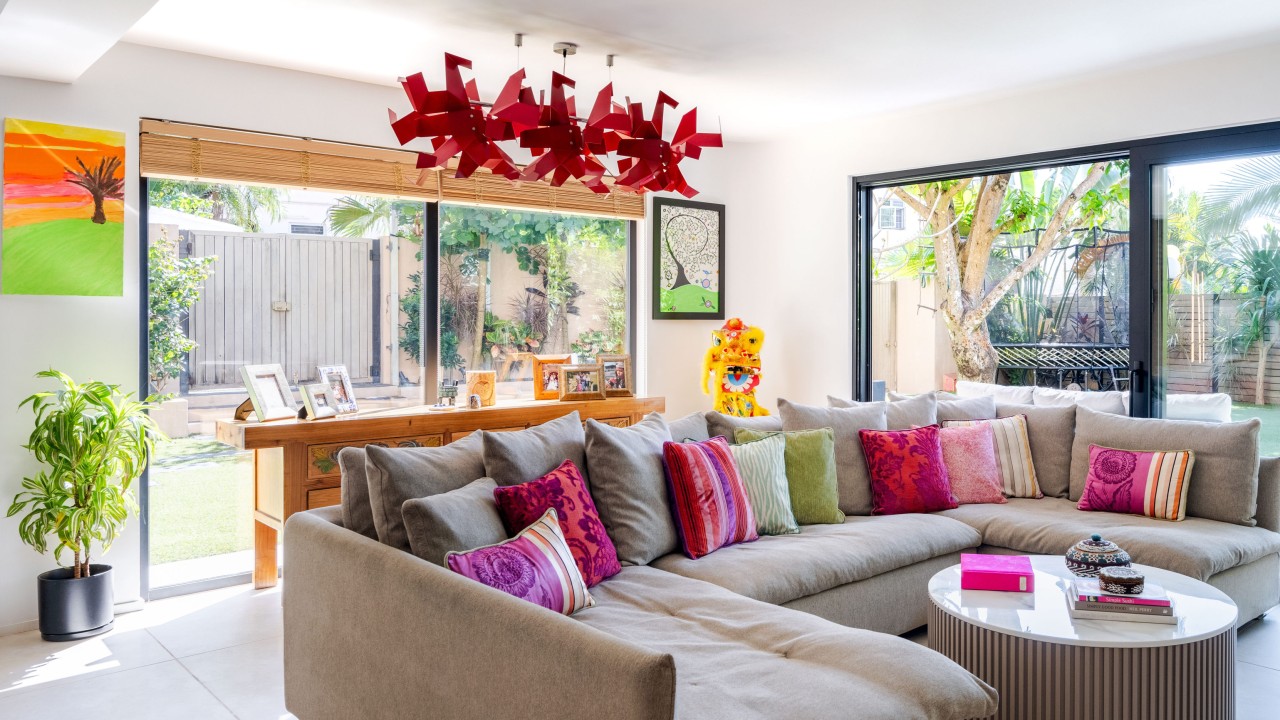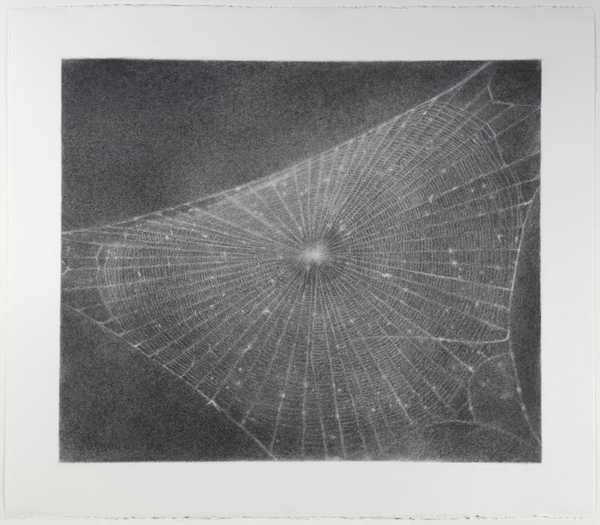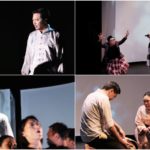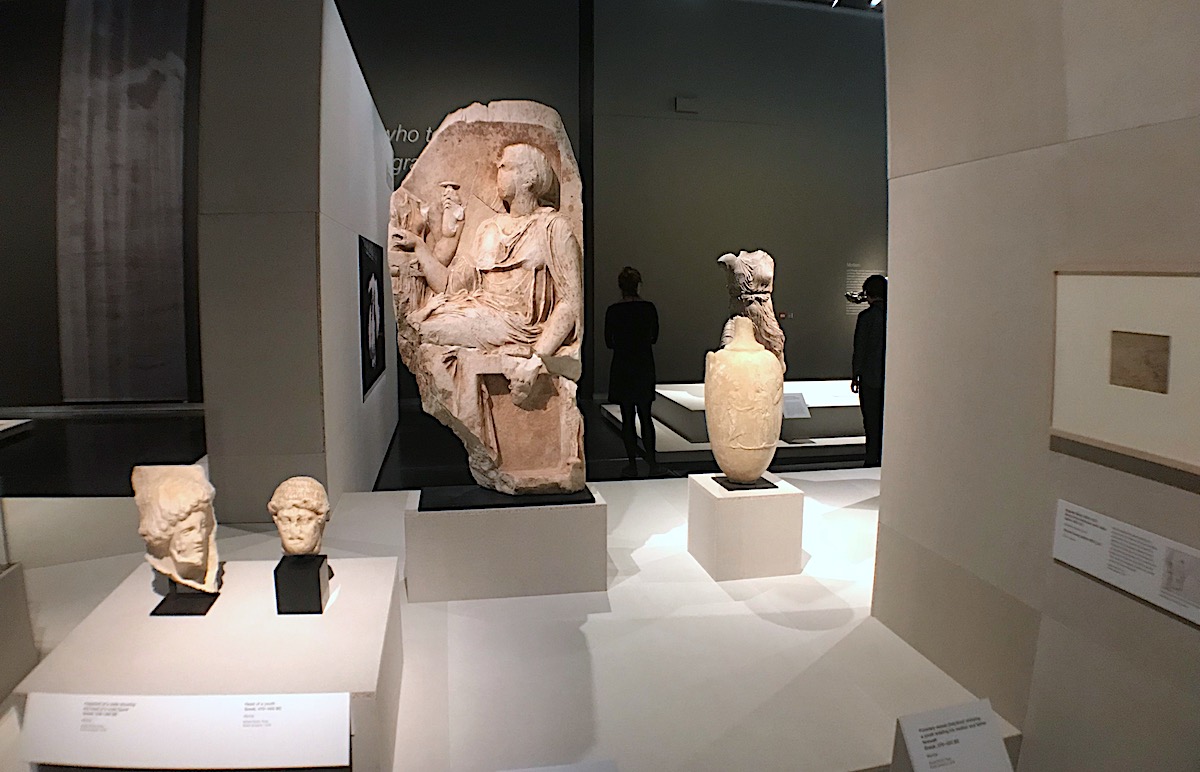The Class
2005 - Film & Video (Film & Video)
Araya Rasdjarmrearnsook
The Class (2005) by Araya Rasdjarmrearnsook challenges the viewer’s personal sense of morality and tolerance by depicting a classroom from hell. In the video, a woman, dressed in black with a white over shirt, stands in front of a long blackboard. The classroom’s rear walls and floor are covered in taut white fabric, given the room the sinister appearance of a sanitarium or a crime scene. Six bodies lay across the floor on silver morgue trays, their features all but obscured by gently draped white sheets. The woman at the front of the class begins to lecture to the lifeless bodies with a clear and calm diction. As she turns to address the rear wall, she grabs the chalk and writes her topic on the blackboard: death. She then proceeds with her monologue, discussing how death is addressed and approached from various historical, cultural, and philosophical perspectives. She occasionally addresses the lifeless bodies, imploring them to share their own perspectives and experiences. She continues to speak, undeterred by the lack of response or reciprocity. Deliberately absurdist in its premise, Rasdjarmrearnsook’s video parodies pedagogical conventions, and the metaphor here of the corpse-as-student plays off humorous tropes of being literally “bored to death.” But in opening a conversation about death – which is often considered too taboo to casually discuss in many cultures (and particularly in the West) – Rasdjarmrearnsook also questions how we treat conversations around mortality in public discourse and how those dialogues, while vital, all too often fall upon deaf ears until it is too late.
Araya Rasdjarmrearnsoon began producing film and video-based work in the 1990s. Her work considers a wide range of subjects but focuses in particular at populations that live on the margins and/or are marginalized by normative social structures, including women, the deceased, and people with disabilities. She even considers the rights of animals in her work and assumed hierarchies between species. Her narrative work confronts societal norms and structures of power and pedagogy. She earned fine arts degrees from Silpakorn University, Thailand and has exhibited in many venues internationally, including Documenta 13 (2012).
Colors:
Related works sharing similar palette

© » KADIST
Proyecciones Espacio Odeón (Bogotá, Colombia) y Museo La Tertulia (Cali, Colombia) ¿Cómo enfrentamos la incertidumbre de estos tiempos? ¿Puede el juego, los sueños, o incluso las alucinaciones ayudarnos a imaginar otras posibles trayectorias? ¿Qué tipo de prácticas nos permiten relacionarnos con los territorios que habitamos? Tomando como punto de partida el potencial de lo inquietante en medio de una amenaza invisible, Sigo esperando es una serie de proyecciones en las fachadas del Espacio Odeón (Bogotá) y del Museo La Tertulia (Cali)...

© » KADIST
Robert Zhao Renhui
2014Created during Zhao Renhui’s residency at Kadist SF in 2014, Zhao Renhui began observing and cataloguing insects inspired by the scientific impulse towards exhaustive taxonomy of Sacramento-based Dr...

© » KADIST
Goldin+Senneby
2010In this installation, you are standing at the heart of a bicephalous space reflecting Goldin+Senneby’s main research led during their residency in Paris...

© » KADIST
Pedro Reyes
2005In Reyes’s words, “We should be able to extract the technological nutrients before we excrete our waste...

© » SOUTH CHINA MORNING POST
Enlarged windows, glass bricks and balustrades allow light to flow through Hong Kong village home after renovation | South China Morning Post Advertisement Advertisement Architecture and design + FOLLOW Get more with my NEWS A personalised news feed of stories that matter to you Learn more When work was thin during the pandemic, an interior designer tapped her employees to overhaul her family’s three-storey villa with garden in Sai Kung, Hong Kong...

© » TATE EXHIBITIONS
American Artist
Vija Celmins | Hatton Gallery See the work of Latvian-American artist Vija Celmins at the Hatton Gallery, Newcastle ARTIST ROOMS Vija Celmins takes an in-depth look at the artist’s works on paper...

© » ARTS EQUATOR
Theatre Podcast: "Tiger of Malaya", Teater Ekamatra Thinking and Talking about Arts and Culture in Southeast Asia ArtsEquator Viewpoints October 1, 2018 Duration: 30 mins ArtsEquator’s theatre podcast host Matt Lyon is joined by guests Naeem Kapadia and Charlene Rajendran to discuss Teater Ekamatra’s Tiger of Malaya , which was written by Alfian Sa’at and directed by Mohd Fared Jainal, staged at the Drama Centre Black Box, inside the National Library Building, Singapore, from 12 to 23 September 2018...

© » KADIST
Jean-Marie Straub and Danièle Huillet
1982En rachâchant is based on the short story Ah! Ernesto! (1971) by Marguerite Duras in which the child Ernesto does not want to go to school anymore as all that he is taught are things he does not know...

© » KADIST
Fernanda Gomes
2013For this floor based work, Gomes has taken two lengths of bamboo and tied them together using linen thread...











